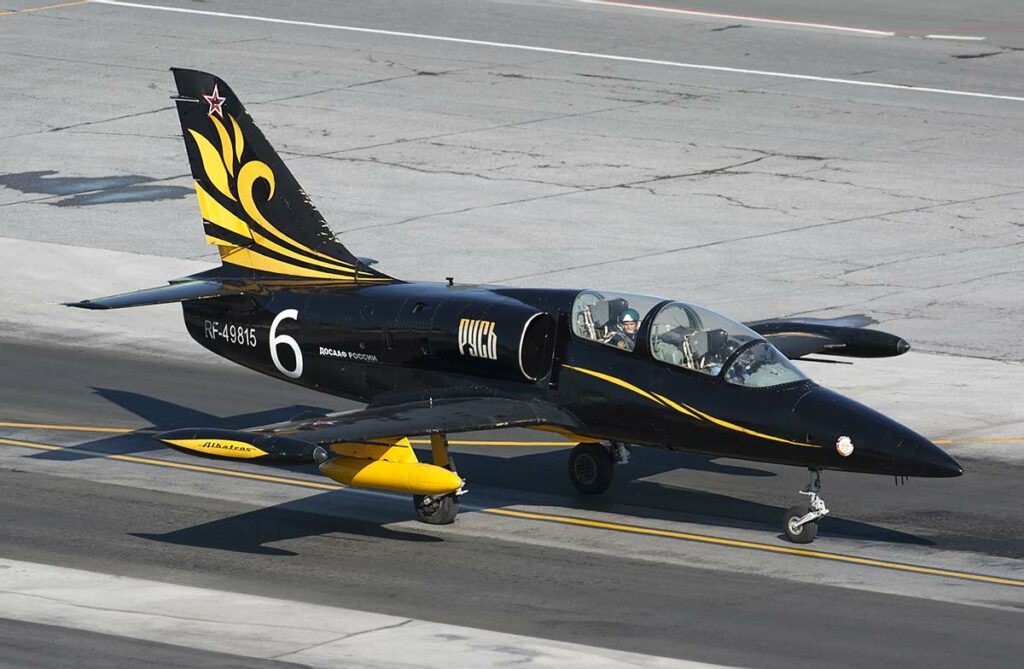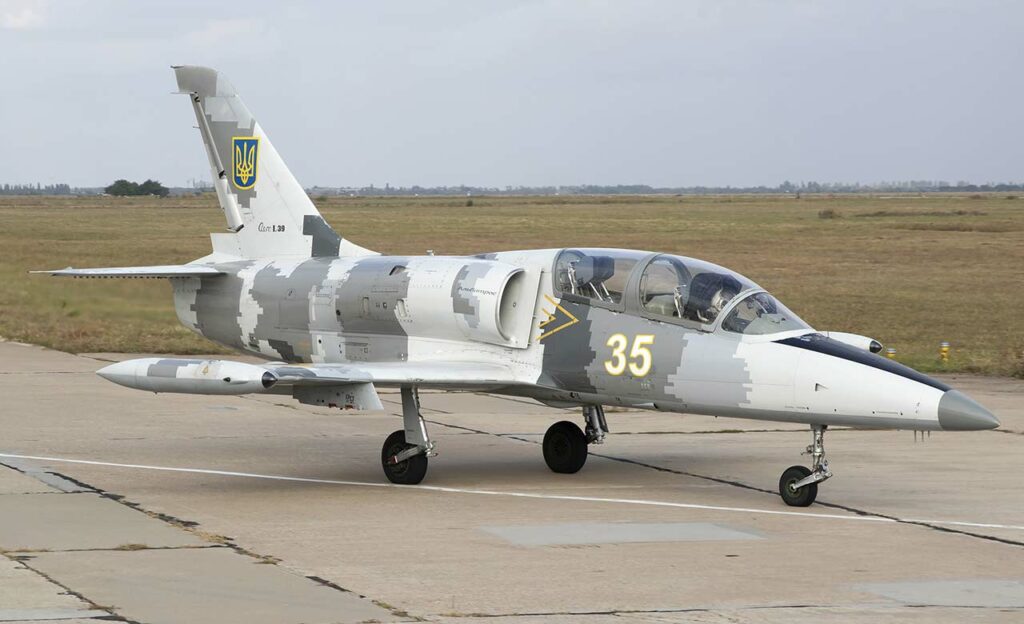The Aero L-39 Albatros is a high-performance jet trainer designed for basic and advanced training, featuring a single Ivchenko AI-25TL turbofan engine, low-set straight wings, and a tricycle undercarriage.
In brief
The L-39 Albatros, introduced in the early 1970s, emerged as a significant advancement in jet trainer aircraft, being the first of its kind to be powered by a turbofan engine. With its efficient design, including a robust structure, simplified maintenance, and modularity, the L-39 streamlined production and operation. Its capabilities extend beyond training to include light attack roles, evidenced by its armament options and underwing pylons for various ordnance. The aircraft’s design facilitates excellent visibility and situational awareness for both the instructor and the student, essential for effective training missions.

History of the Development of the Aero L-39 Albatros
The development of the L-39 Albatros by Aero Vodochody in Czechoslovakia was driven by the need for a modern jet trainer to replace the older L-29 Delfín. The project, initiated in the 1960s, culminated in the L-39’s maiden flight in November 1968, with the aircraft entering service with the Czechoslovakian Air Force in 1974. The L-39 was designed to offer a balance between performance, efficiency, and versatility, serving not only as a training platform but also capable of performing light attack duties.
Design of the Aero L-39 Albatros
The L-39’s design features include low-set straight wings with a double-taper planform and wingtip fuel tanks, a streamlined cockpit with Czech-built VS-1 ejection seats, and a single Ivchenko AI-25TL turbofan engine located in the rear fuselage. The aircraft’s aerodynamic and structural characteristics facilitate a balance of maneuverability and stability, essential for pilot training and light combat roles. Its hydraulic system powers the flaps, landing gear, and other critical components, while an automatic trimming system enhances flight safety and performance.
Performance of the Aero L-39 Albatros
The L-39 Albatros boasts a maximum speed of 910 km/h, a service ceiling of 11,000 meters, and a range of 1,350 km. Its turbofan engine and aerodynamic design contribute to its notable performance metrics, making it competitive among jet trainers and light attack aircraft. The L-39’s operational capabilities have been proven in various training and combat scenarios, underscored by its adoption by multiple air forces worldwide.
Variants of the Aero L-39 Albatros
The L-39 family includes several variants, from the basic L-39C trainer to the more advanced L-39ZA armed trainer, along with the L-39V target tug and the L-39MS, a modernized version with a reinforced fuselage and enhanced avionics. The most recent development is the L-39NG, featuring upgraded engines and avionics, demonstrating the platform’s continued evolution to meet modern training and combat requirements.

Military Use and Combat of the Aero L-39 Albatros
The L-39 has seen combat in several conflicts, including the War in Abkhazia, where it was used for ground attack missions, and in the First Nagorno-Karabakh War. Its operational flexibility, reliability, and cost-effectiveness have made it a valuable asset in both training and combat roles. The L-39’s widespread use across various air forces attests to its enduring legacy in military aviation.
The Aero L-39 Albatros has established itself as a cornerstone of military pilot training, offering a blend of performance, versatility, and reliability. Its continued use and the development of modernized variants like the L-39NG underscore its significant role in shaping the capabilities of air forces around the world.
Back to the Fighter Jet section.